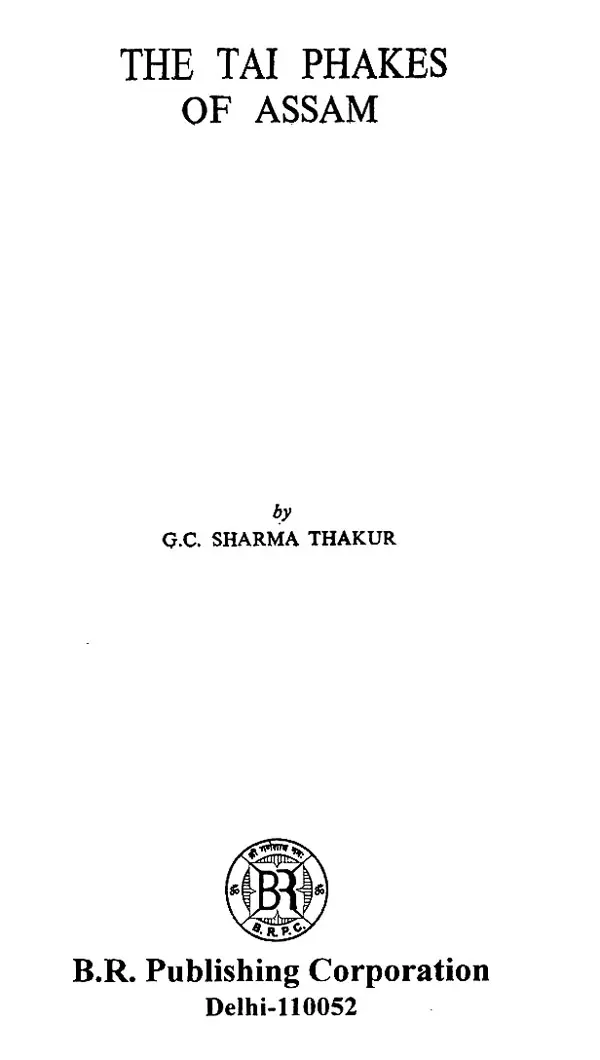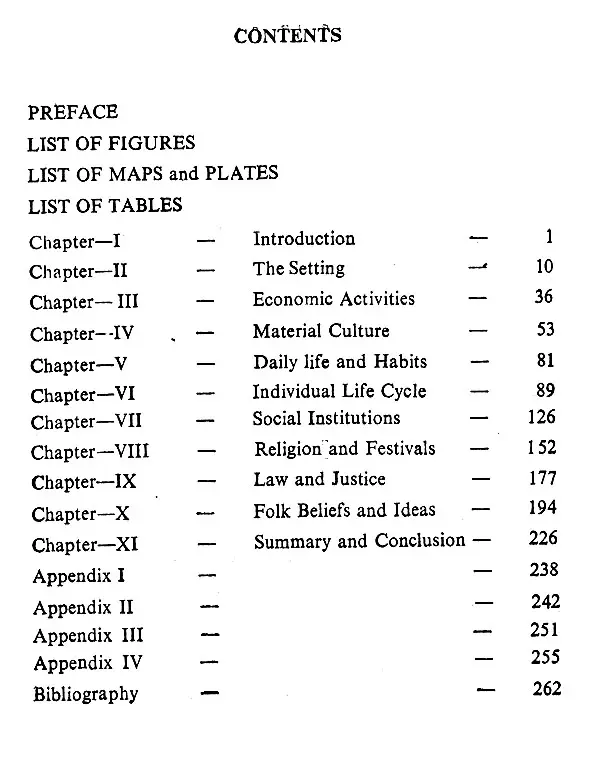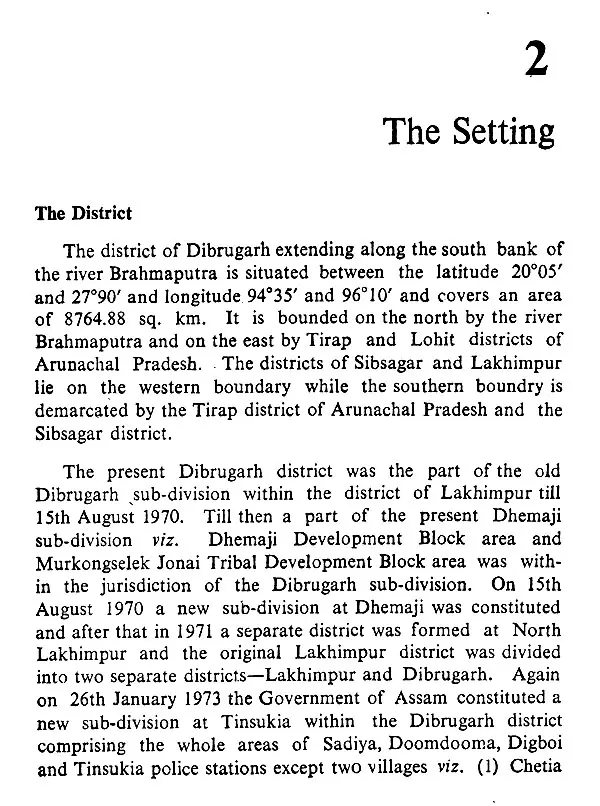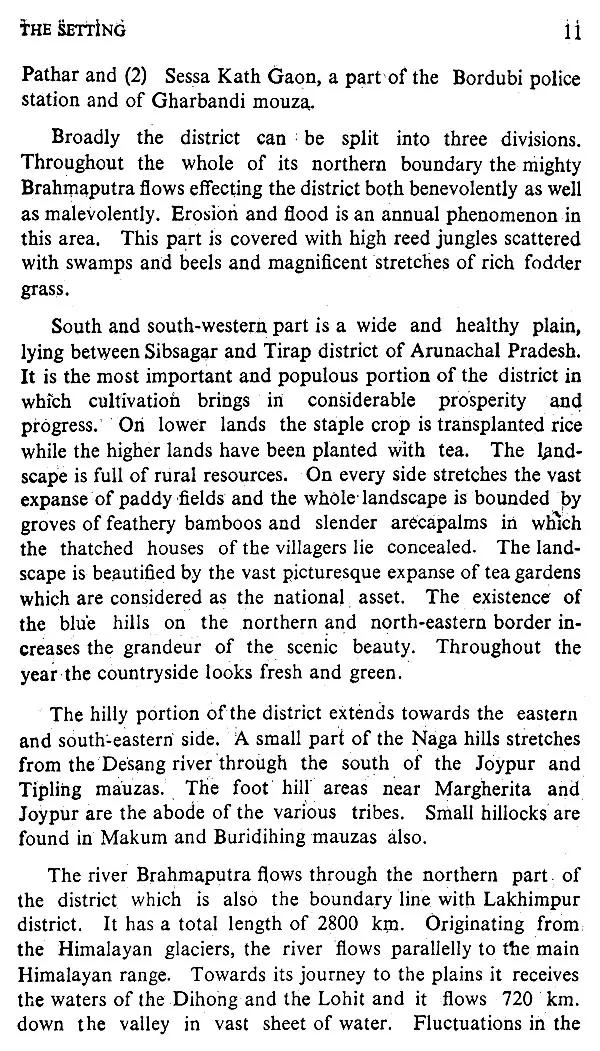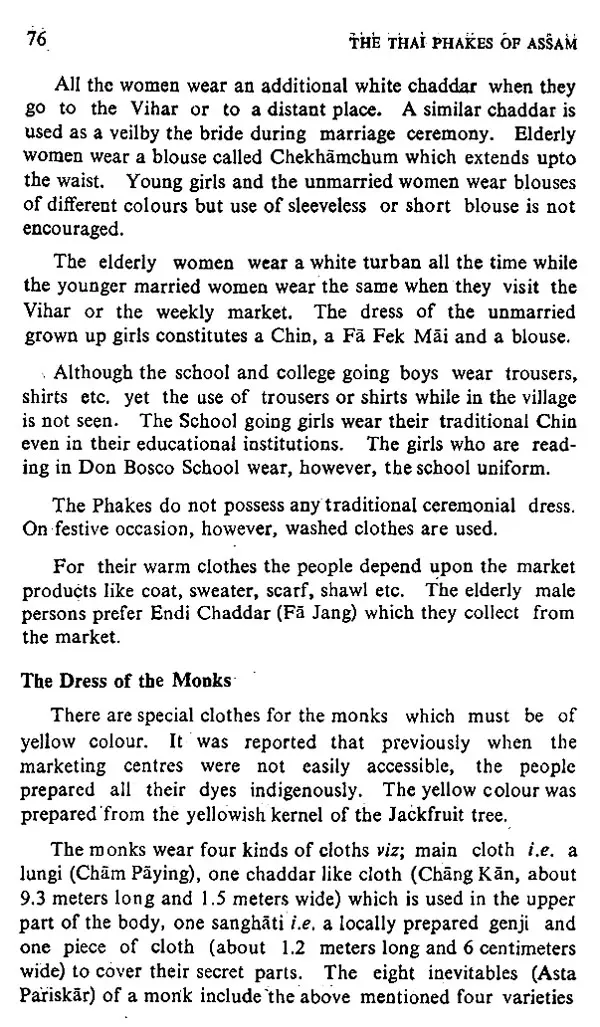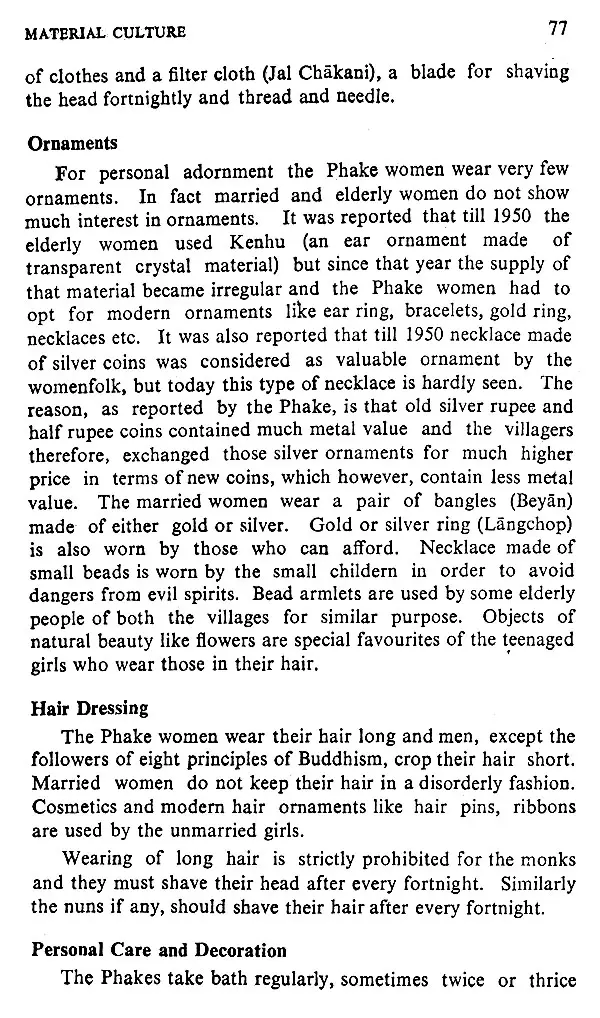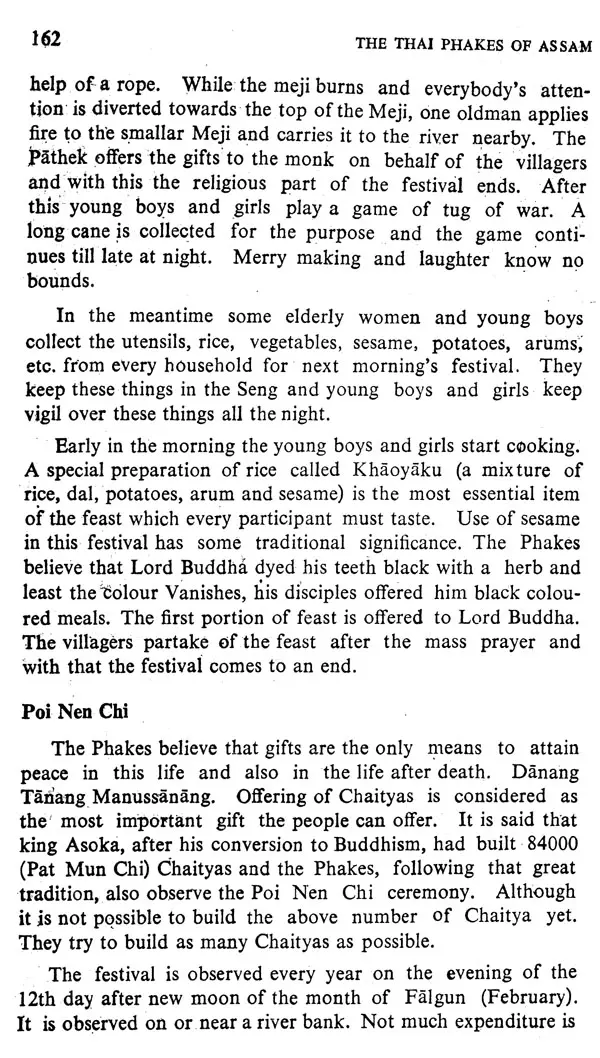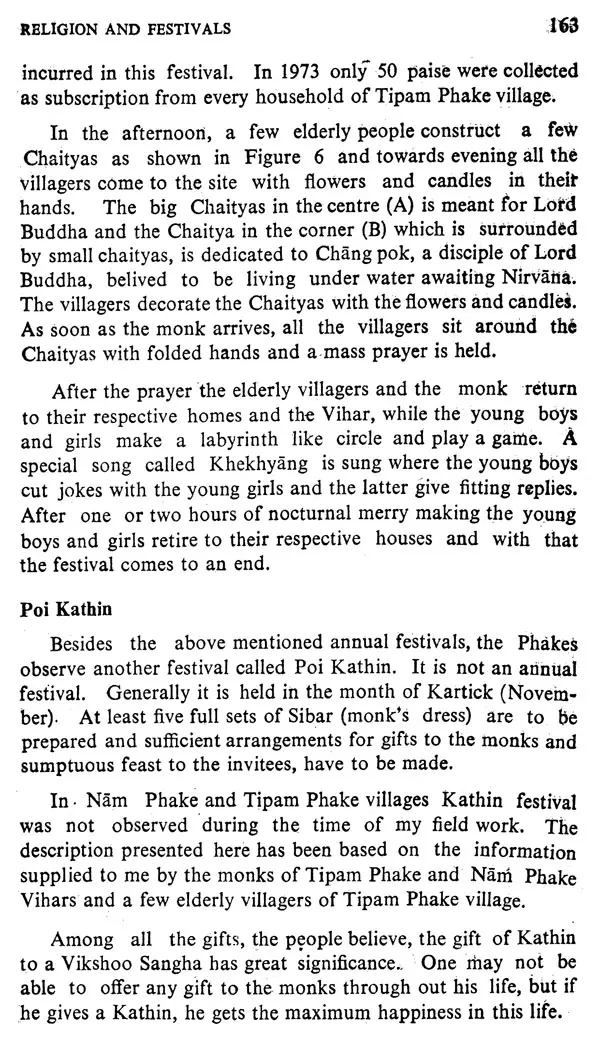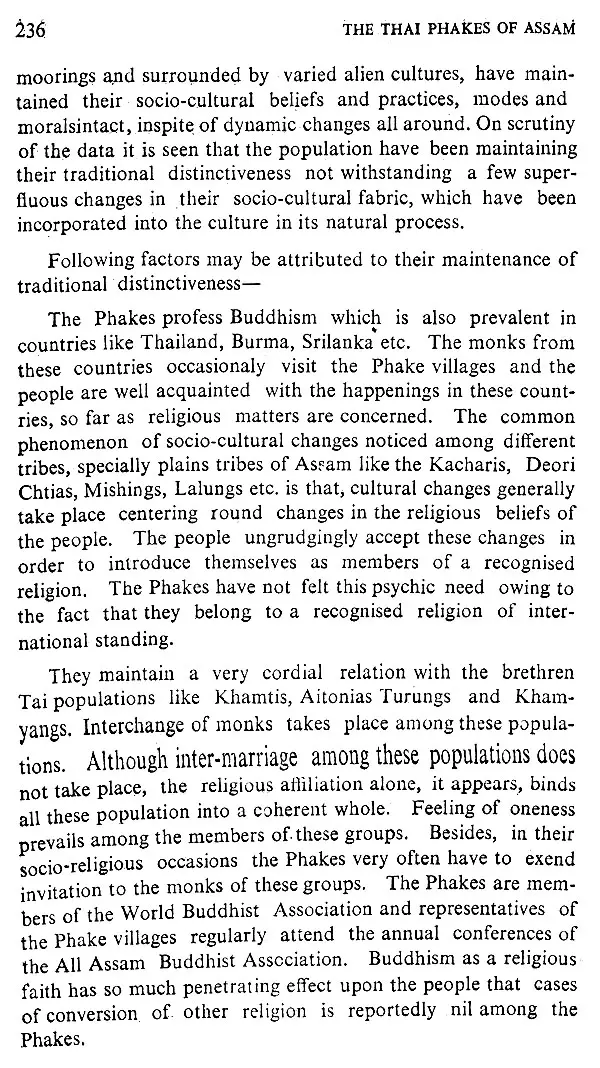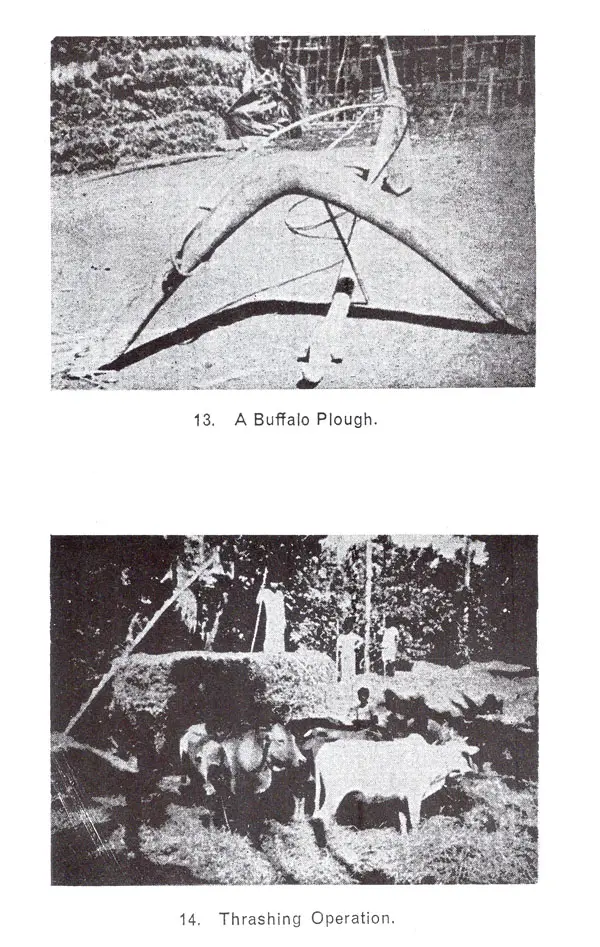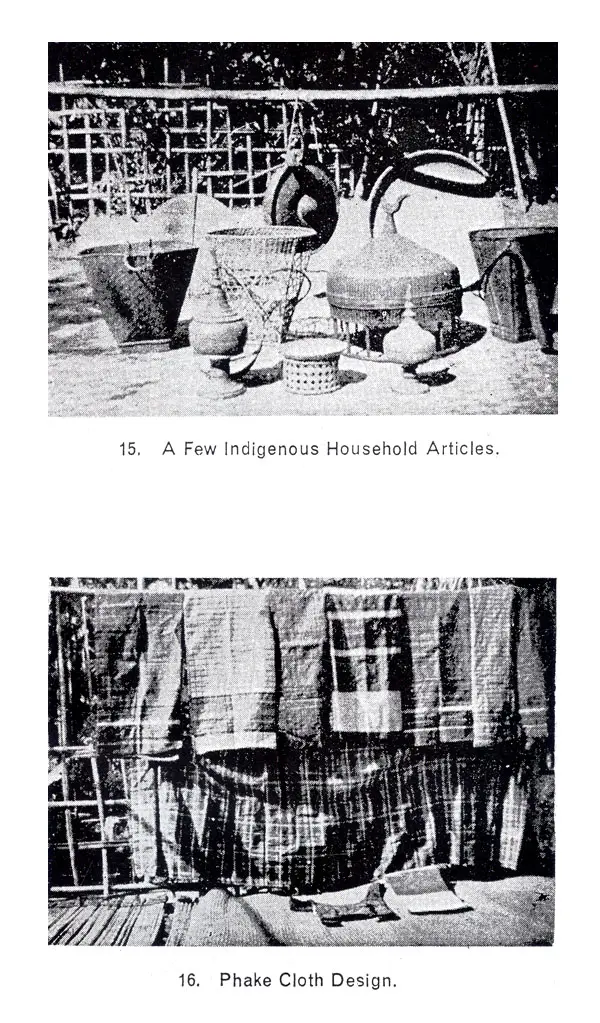
The Tai Phakes of Assam
Book Specification
| Item Code: | UAS669 |
| Author: | G.C Sharma Thakur |
| Publisher: | B.R. Publishing Corporation |
| Language: | English |
| Edition: | 2013 |
| ISBN: | 9789350501078 |
| Pages: | 308 (Throughout B/w Illustrations) |
| Cover: | HARDCOVER |
| Other Details | 9.00 X 6.00 inch |
| Weight | 470 gm |
Book Description
The book is about the Tai Phakes, also called Phakials, who inhabit the riverine areas of Dibrugarh district of upper Assam in India. Outside India they are found in areas extending up to the Chinese province of Kwansi, and from Bangkok to the interior of Yunnan province. They entered Assam in the later half of the 18th Century.
While studying the Tai Phakes- their manners and custom, material culture, social and religious institutions, their folklores and ethnological affinities, the author noticed that the small but homogenous Tai Phakes have been maintaining their traditional distinctiveness even though they are surrounded, on all sides, by cultures and peoples with whom the pacific Tai Phakes have imperfect sympathies.
The Tai Phakes of Assam is the first full length anthropological study of the Tai Phakes living in India. As such to the anthropologists the book unfolds new knowledge of people about whom we know precious little.
Dr. G. C. Sharma Thakur (GANESH CHANDRA SHARMA THAKUR) (b. 1st March 1935), the author of The Tai Phakes of Assam was a District research Officer in the Tribal Research Institute at Gauhati (Assam). A man of wide experience in the field of tribal study, Dr. Thakur is not an unknown figure in the world of Indian Anthropology. His research papers more than twenty of them- written both in English and Assamese have been thought of highly.
This book is an humble attempt to give a systematic account of the Tai Phakes, a lesser known Buddhist population of Upper Assam, their manners and customs, ethnological affini ties, material culture, social institutions and organisations, laws, religious beliefs and practices, folk lore and their theories as to their origin. This is an edited version of the Thesis entitled A Study on the Socio-Cultural Life of the Tai Phakes of Assam' for which I was awarded a Ph.D. degree by the Dibru garh University in 1976.
My sincerest gratitudes are due to Dr. B.M. Das, Professor and Head of the Department of Anthropology, Gauhati University, but for whose constant encouragement and able guidance it would not have been possible to bring to reality the dream of completing this book.
I am deeply indebted to Professor M.C. Goswami, former Professor and Head of the Department of Anthropology, Gauhati University who initiated me into the field of Anthropology.
I must record my appreciation and hearty thanks to Dr. A.C. Bhagawati, Professor and Head of the Department of Anthropology, Dibrugarh University for offering me valuable suggestions while preparing the monograph.
I offer my deep sense of gratitude to Dr. S.C. Roy, a renowned Anthropologist who was also an examiner of my Thesis, for his critical appraisal and valued suggestions.
North-East India is the abode of a large number of Mongoloid populations who belong to different linguistic families. "Linguistic evidences, popular customs and some of the place names of the province also indicate that the earliest inhabitants of Assam were speakers of the Indo-Chinese language of the Monkhmer family which has been characterised by Schimdt as the Austric family languages." At present the Khasis and Jayantias of the Khasi and Jayantia hills of Megha laya are preserving this identity.
The Austric speaking Mongolian people were followed by various people, speaking Tibe to Burman languages, who also belonged to the Indo-Chinese language family. The Tibe to Burman sub family consists of three main groups namely, Naga, Kuki-Chin and Bodo. The Naga and Kuki-Chin groups preferred Naga hills and the adjacent areas as their abode and became the ancestors of that multifarious tribes whose speeches are classed as the Naga group. The Third group i.e. the Bodo, includes a large number of populations like the Garo, Koch, Kachari, Rava, Chutia, Mech, Dimasa, Tipra etc. who are distributed in the different parts of Assam and its neigh bouring states.
Book's Contents and Sample Pages
